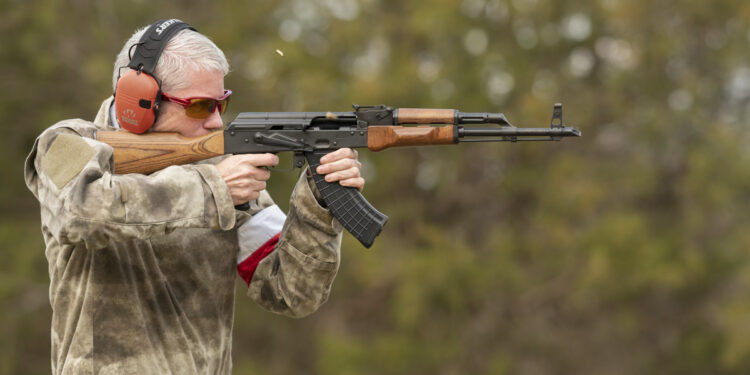By Oleg Volk –
A great factor in the popularity of the AK rifle platform in the 1980-90s was the wide availability of cheap military surplus plinker ammunition from the former ComBlok countries. Later, after the surplus waned, still-inexpensive steel-case commercial bulk 7.62x39mm fodder became available. The commercial ammo had the advantage of being non-corrosive. People made videos of mag dumps with drums, showing smoking handguards. While surplus 5.45x39mm ammunition was briefly available on the cheap, magazines and cartridges were never quite as accessible, and neither were the guns that fired it.
Fast-forward two decades, through import restrictions and inflation, now the cheapest 7.62x39mm runs 40 cents per round. Blasting through a magazine just for fun is not only expensive but worse, blasting through the same for training costs just as much. With much of the ammunition still using spark-making gilded steel jackets, indoor ranges treat cheap 7.62x39mm as a fire hazard. At my outdoor range, fires aren’t a risk, but damaging steel targets at close range when practicing close range rapid fire is a concern. With the AR15, the solution is simple: several companies make affordable .22 uppers with realistic feel and manual of arms. Up to now, rimfire clones of the AK47 have been either unreliable, fragile, inauthentic, or all three. Recently, Pioneer Arms from Radom, Poland began making realistic, durable, and very authentic copies of the AKM in chambered in .22 rimfire.
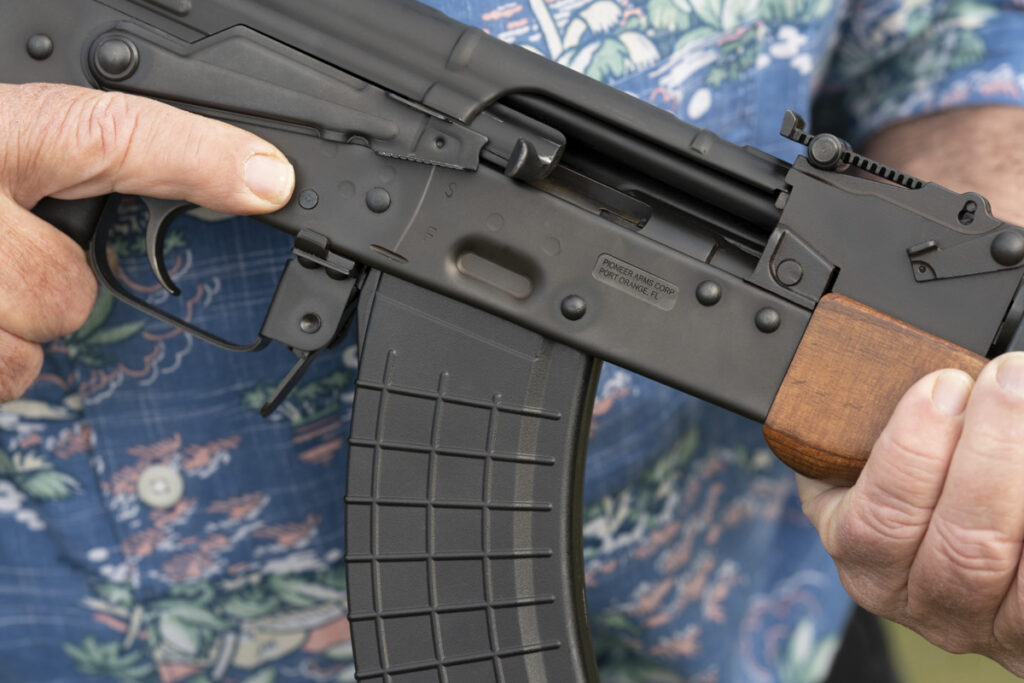
The 5-pound 10-ounce wood-stocked rifle looks like the real thing, complete with the slant muzzle compensator. The only detail giving away the unusual nature of the rimfire trainer rifle is the charging handle placement further back than usual, and a smaller ejection port recessed inside the top cover opening. The breech face of the 16-inch barrel sits a little further back than usual, too, accommodating the shorter cartridge and the correspondingly abbreviated bolt travel distance. From the left, there’s no visual difference at all. Full-size 30-round magazines I used were the real thing with the feed lips cut short and a 3D printed 10-round magazine inserted in their place. Remarkably, even the two printed magazines held up through a very high volume of fire. The magazine follower holds the bolt open until removed to prevent accidental dry fires, a small concession to the rimfire nature of the rifle. Production magazines will be visually identical to the 7.62x39mm mags produced by Pioneer Arms, a lightweight and inexpensive all-polymer design. Capacity is still pegged at 10 rounds, mainly to simplify logistics and avoid having to make and track special ban-state variants. With the main purpose being training, frequent magazine changes aren’t that much of a detriment.
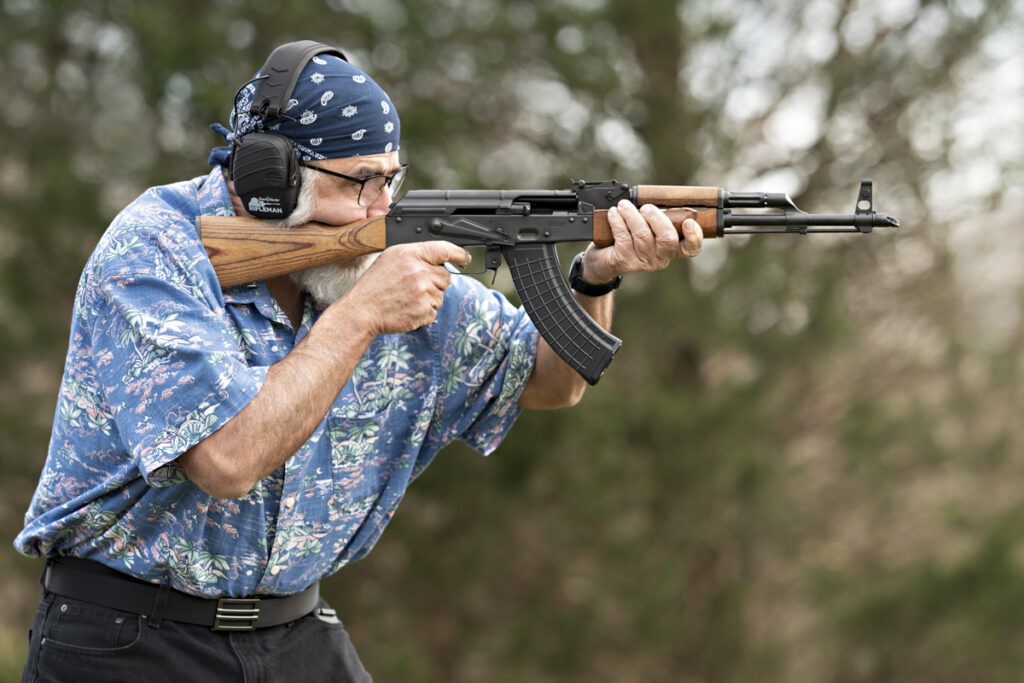
The sights are identical to the centerfire version, though the range markings would have to be memorized once the dope chart is done. With the rear leaf set to a “direct shot” point blank setting, I could hit a head-sized target at 50 yards by placing the front sight post right under it and by aiming right on at 100. The close-range drills were often done by bracketing the target with the protective ears of the front sight and not even bothering with more precise sight alignment. With AK clones, the iron sights provide the natural limits on practical accuracy, and plinker-grade ammunition places another constraint. In the cheap-and-cheerful spirit of the platform, I used mainly bulk fodder and found it to be almost entirely reliable, the rare exception being occasional unprimed cartridges. When shooting at 100 yards, the main goal was to keep the impact group centered on the target to indicate correct sight alignment, smooth trigger pull, and follow-up. Closer, the goal was rapid sight acquisition, effective transition from target to target, and developing better familiarity with the controls of the AKM. For those goals, the AK47-22 proved ideal. Benched groups were surprisingly good at around 2 inches at 50 yards or 4MOA, my ability to align sights being the greatest limiting factor.
Since the rifle has no recoil and a moderate length of pull, it proved a favorite with teen and female shooters. And a range visitor wanted to run at least a hundred rounds through this rifle, an interesting display of favoritism considering how many more exotic arms were also available for use. With hardy, standard-sized magazines fitting regular AK magazine carriers and pouches, this gun proved highly useful for movement drills.
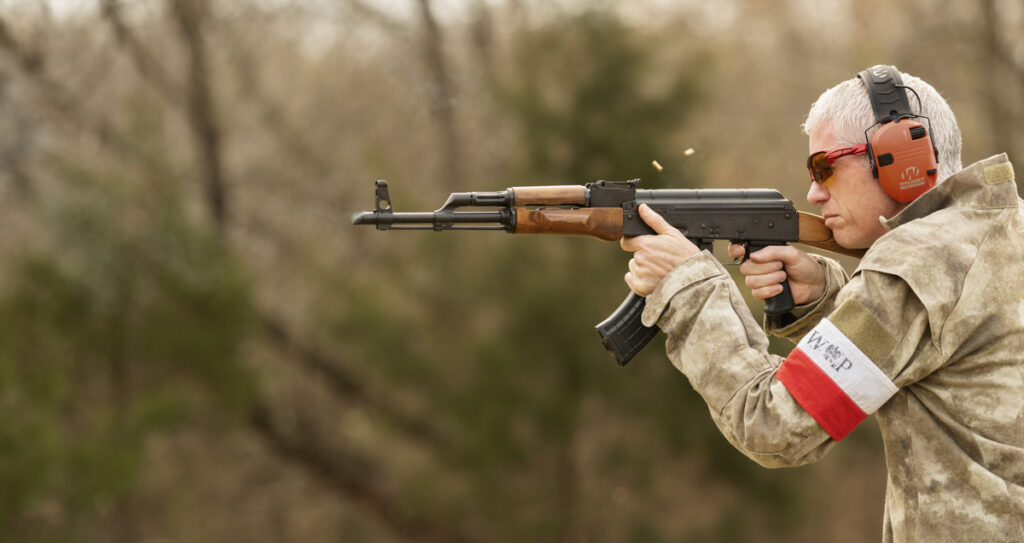
Fieldstripping follows the regular process at first, but the gas tube can stay in place since it is entirely decorative. 80% of the combined simple blowback bolt and carrier, other than the aluminum guide tube in place of the gas piston, is made of steel. More extensively skeletonized than the centerfire original, it is just slightly lighter. The mechanism proved quite reliable: my friends and I shot at least 1,500 rounds of mainly un-plated .22 ammunition without any cleaning and saw no reduction in accuracy or reliability.
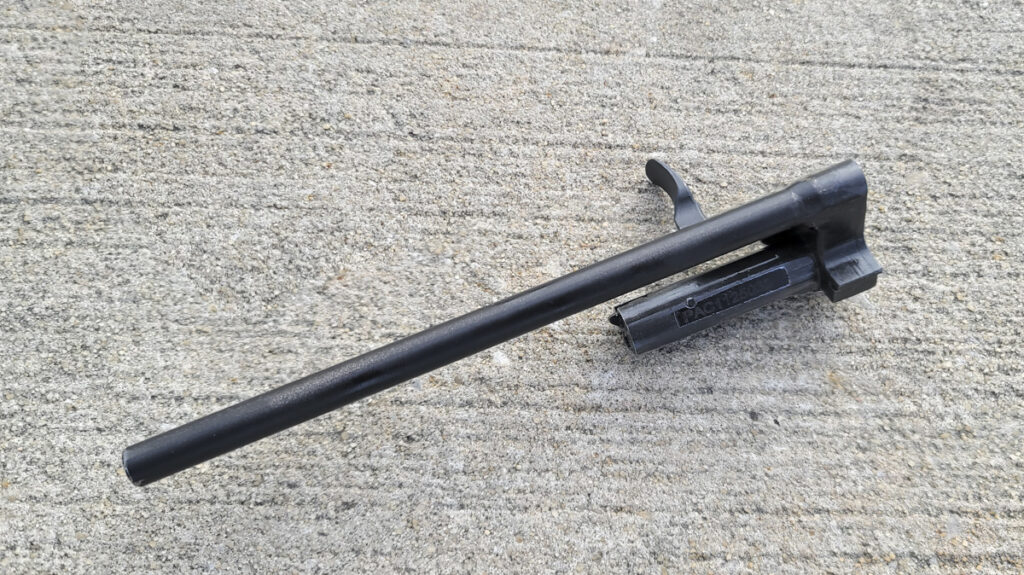
The rifle ships with the standard AK pattern compensator held by a detent in the front sight tower. Other muzzle devices, including linear comps and sound suppressors, can be installed without resorting to tools. Even a cleaning rod is included! The only missing piece of authenticity is the bayonet mount in case that charging Chupacabra doesn’t fall promptly enough to the mighty .22 rimfire.
Besides the rifle form, this action is also available as a Hellpup pistol with a 12-inch barrel. Given the disruptions in the supply of AK ammunition, either variant should be a desirable training aid. It’s also just plain fun, a little lighter than the 7.62mm original, recoil-less and less annoying to neighbors’ dogs.
Make: Pioneer Arms
Model: AK47-22
Caliber: .22LR
Barrel Length: 16in
Overall Length: 34in
Weight: 10.625
Mag Capacity: 10rd
MSRP: $TBD
URL: www.pioneer-pac.com



